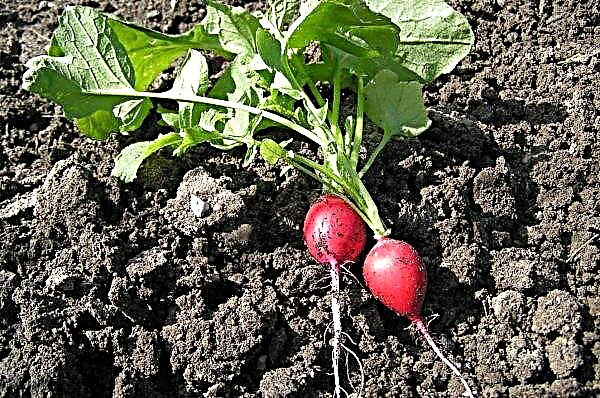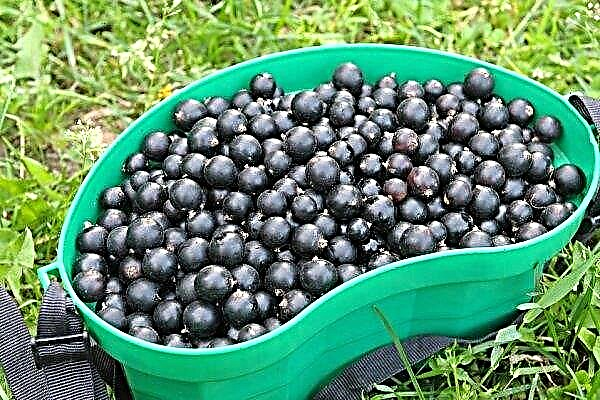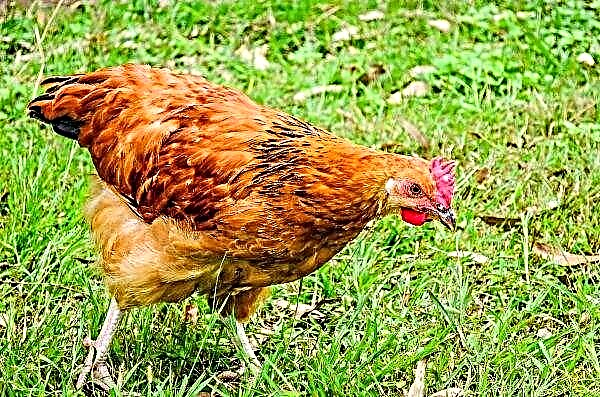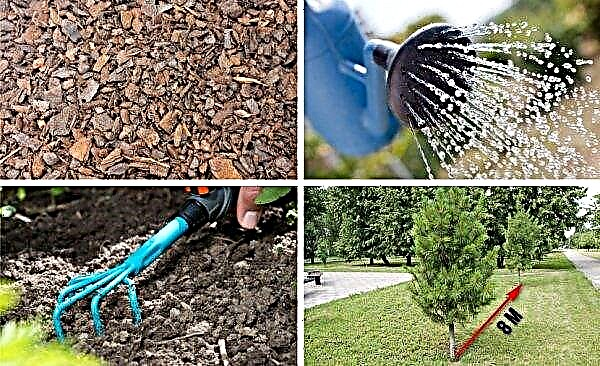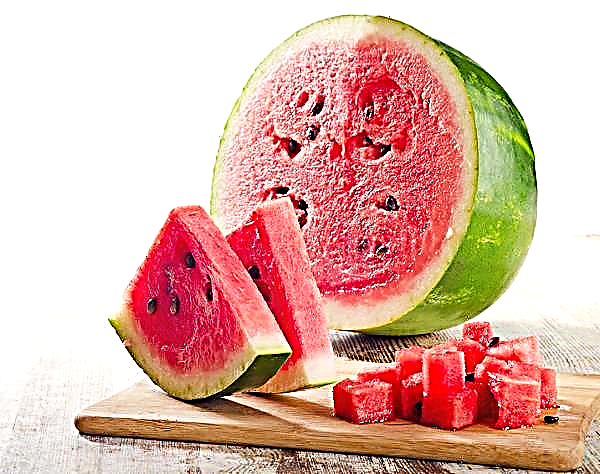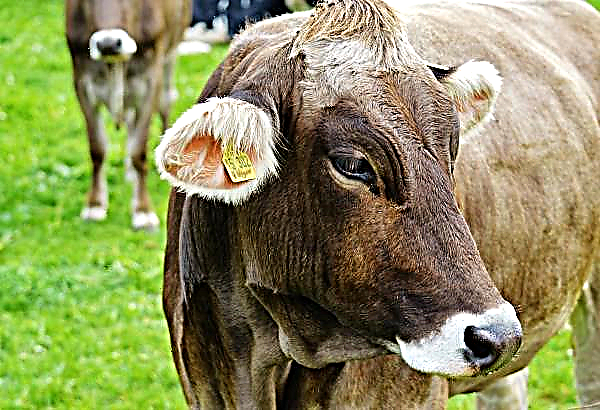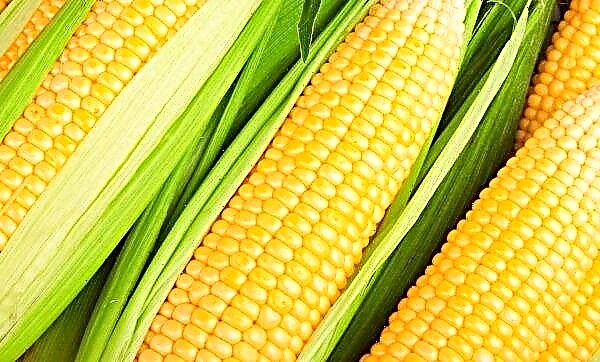The taste and marketability of cabbage forks directly depend on compliance with the water regime. Watering at the very initial stages of the growing season affects the formation of the crop, so you need to pay due attention to how and in what quantity to water the cabbage throughout the season.
Water selection for irrigation
The temperature of the water used is essential. Too cold causes stress in the plant, provokes the development of fungal diseases and inhibits the root system, so well and well water collected from the well must be warmed up to +18 ... + 23 ° С. In addition to heating, tap water must also be defended in open containers - buckets, basins, etc., in order for chlorine to disappear from it. The best option would be to collect rainwater, and natural reservoirs can be used only if they are not polluted by industrial and household effluents.
When and how often to water cabbage
Cabbage is a moisture-loving crop and needs plentiful and frequent watering. But at the same time, the climatic conditions of the terrain and weather conditions must be taken into account so as not to overfill the plants. Determine whether to water the cabbage by digging the soil with a shovel on the bed to the depth of the blade. If the earth is a little wet - the time has come, and you can’t wait until it dries. The optimum soil moisture required for the normal development of the crop is 80%. Watering is carried out in the absence of direct sunlight: in the morning, in the evening or on a cloudy day.
Watering Methods
Gardeners organize the irrigation of their plot in accordance with their technical capabilities, but it should be borne in mind that in cold weather the bushes are watered under the root, or from above if it is dry and hot. To do this, use different methods of supplying plants with moisture, the main of which will be discussed later.
Important! If foliar top dressing or drug treatment is done, you can water the cabbage from above only a day after the procedure.
Manual
With the help of a bucket or a watering can, accurate watering under the root with the right amount of water is possible, which you can warm up or add top dressing, and the nozzle with a divider makes it possible to irrigate the bushes from above on the leaves. This method is cheap and economical, but fraught with prolonged physical exertion and a large investment of time with a large area of beds.
With a hose
Using a hose is the easiest and cheapest way to quickly water a small area. At the same time, several seedlings, especially young and immature, inevitably die, crushed by the heavy dirty hose rings. A large amount of water under pressure erodes and clogs the upper layers of the soil, polluting the plants, and then it is absorbed into the soil for a long time, preventing the possibility of qualitatively loosening it.
By rain
Recently, despite the high cost, automatic irrigation systems for irrigation both large fields and small beds have been increasingly used. Equipped with different types of sprinklers connected to the laid hose, they allow you to adjust the flow rate, droplet size, radius and angle of spraying. At the same time, in addition to the soil, the air is moistened and the leaves of the plants are cooled.

Drip
The easiest and most economical way to “water” the beds is the drip method, which, however, requires some preparation and costs. A hose with hand-made holes or a commercial one with integrated droppers through which water slowly oozes is laid out along the bushes on the beds.
- Such watering has a number of valuable advantages:
- minimal (in comparison with other methods) water consumption;
- moisture drops are quickly absorbed and go directly to the roots of plants;
- only cultivated plants get water, not weeds;
- does not require physical effort;
- does not take time;
- can be carried out at any time of the day without risk of burning leaves due to drops falling on them.
The amount of water when watering
Young cabbage bushes require at least 1-2 liters of water daily. On adult plants, it is necessary to spend up to 15 liters per 1 m², and during the period of tying and growth of forks - up to 30 liters.
Important! When the soil is waterlogged for more than 8 hours, the roots of cabbage begin to die.
Schedule of irrigation during the vegetation stages
Each cabbage variety goes through its development phases at different times and, accordingly, the irrigation intensity changes with this. Early varieties require more moisture in early summer, late ripening in August, so the watering schedule is built taking into account both varietal characteristics of the plant and weather factors. Gardeners often have the question of whether to water the cabbage after the rain. Slight rainfall does not affect the timing of irrigation and water flow. Average-intensity rain shifts watering by 3–7 days, and prolonged rain completely replaces it.

First shoots
When sown in open ground, the weak root system of the sprouts depends heavily on the composition of the soil and its ability to retain moisture. For the first 2-3 weeks, sprouts on sandy soils need to be watered every 2-3 days, and on heavier and denser loams it is enough to irrigate every 4–5 days. If necessary, you can combine watering with top dressing.
Did you know? The stalk of the cabbage is the stalk, and the head of cabbage — it is a huge wintering kidney.
After landing
With the seedling method of growing, the sprouts are abundantly watered in the holes when planting. After this, the first irrigation is carried out after 5-6 days. During the growth of leaves before the formation of forks, cabbage is watered on average 4–6 times a week in a temperate climate and up to 10 times in the southern regions.
During the formation
Moisture is especially necessary when forks are tied and grow. At this time, the soil should be shed to a depth of 40 cm. But irrigation in this period should be especially uniform and constant. If we allow the soil to dry out and then water it abundantly, the internal leaves of the head will begin to grow faster and tear the upper ones, as a result, the entire crop will lose its presentation.
Features of watering
Moisturizing cabbage constantly needs support of optimum humidity of soil and air. When growing crops in open ground, these indicators differ from greenhouse ones, which must be taken into account when watering.
Did you know? Sauerkraut is more useful than raw, because it contains 2 times more vitamins and nutrients that arise in the process of fermentation.
Outdoor watering
In open spaces, under the influence of the sun and wind, the soil surface quickly dries up and the roots of the culture located in the upper layer of the earth require more frequent irrigation. With a lack of moisture, the heads of cabbage are reluctantly tied, the juiciness of the leaves decreases and hard veins form in them.
The cultivation of cabbage in the fields continues until the frosts. Late varieties ripening in autumn, in dry weather, continue to be watered weekly, even in September, because at that time they still grow. Before harvesting in October, starting from the second decade, watering is stopped to complete the vegetation of plants, increase the shelf life and improve the transportability of heads of cabbage.
Watering in the greenhouse
In a covered ground it is much easier to provide the necessary humidity than in a field. To increase it, sprinkling is used, and with excess, a greenhouse is ventilated. Irrigation is carried out plentifully, on average once every 10 days. If polycarbonate is the material for shelter, which retains heat better than others, watering is carried out more often, since the earth dries faster. Early and early varieties of cabbage, which are usually grown in greenhouses, can be watered until the forks are harvested.
In addition to the general rules of irrigation measures, in order to obtain a high-quality cabbage crop, it is necessary to observe the individual requirements of each type and variety, top-dress on time, and also cultivate and mulch the soil to preserve moisture in it and ensure air exchange for the roots of the crop.



